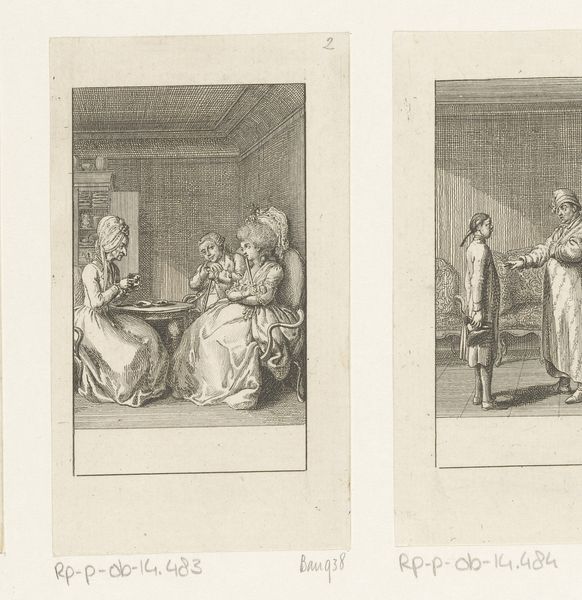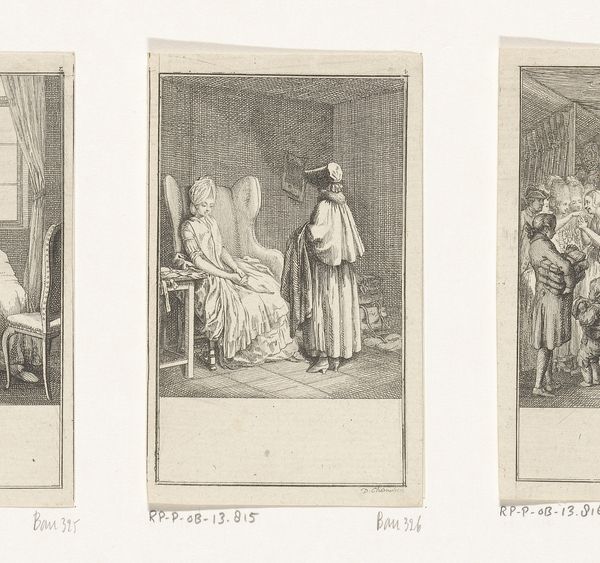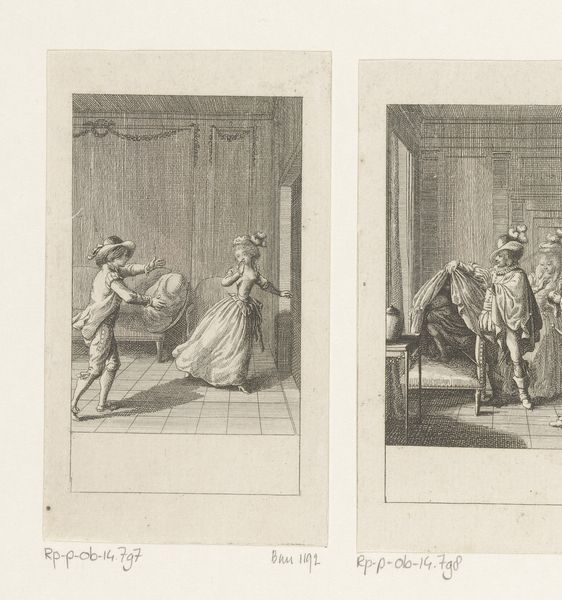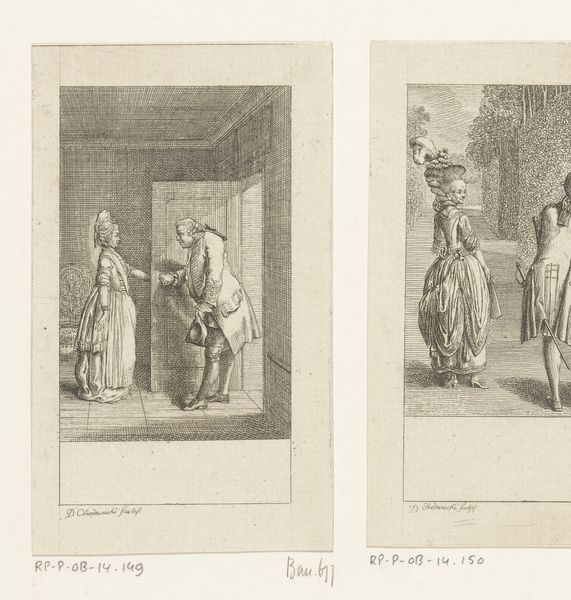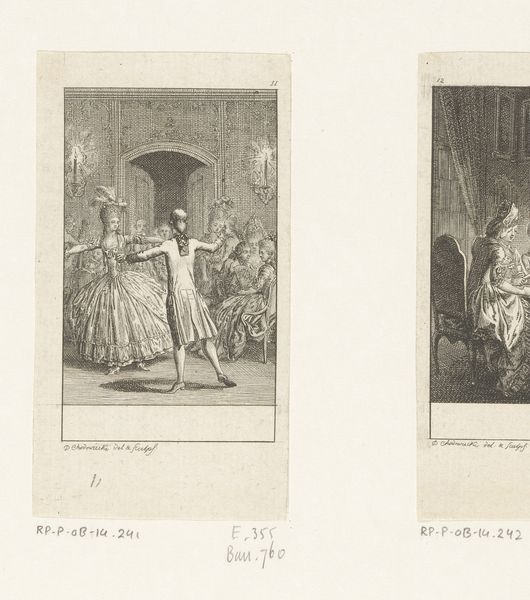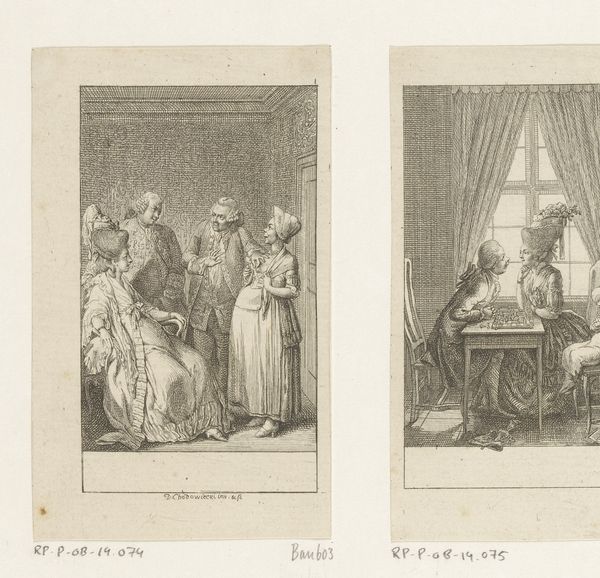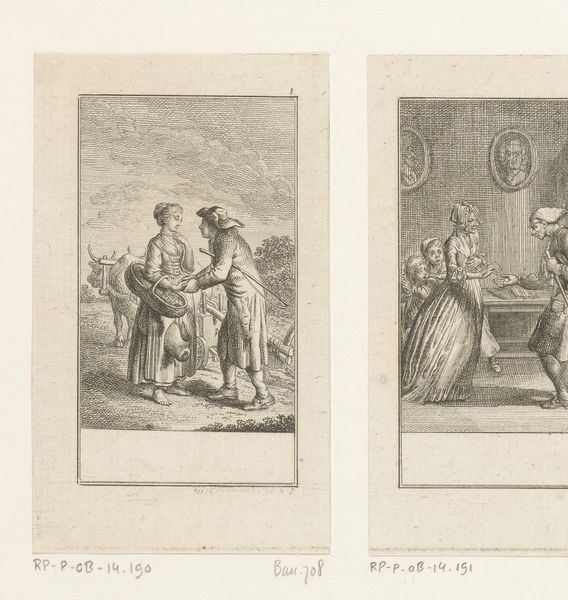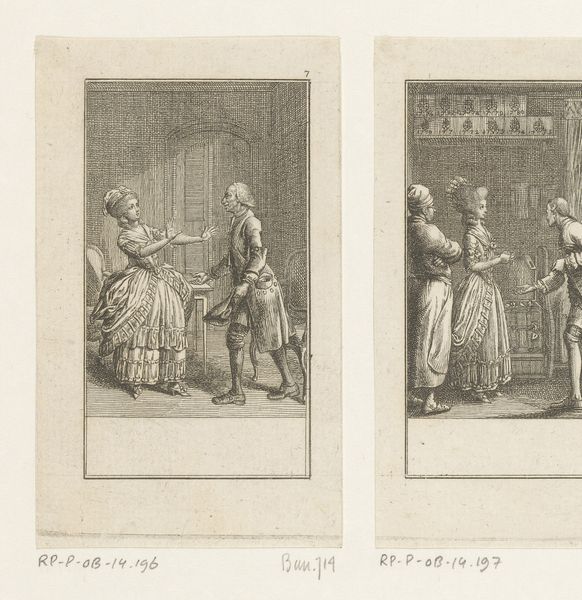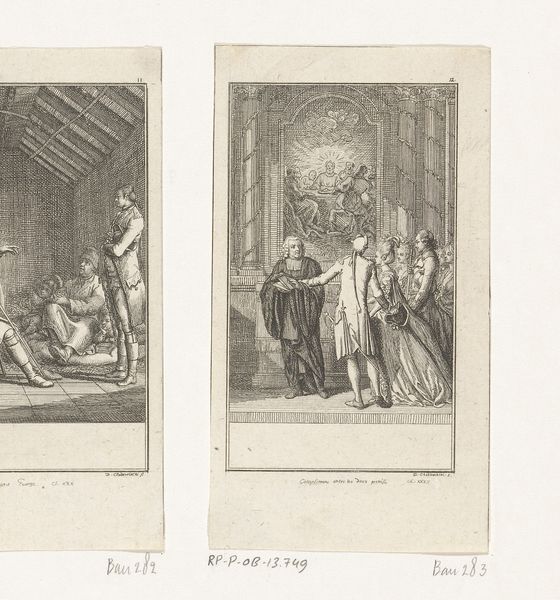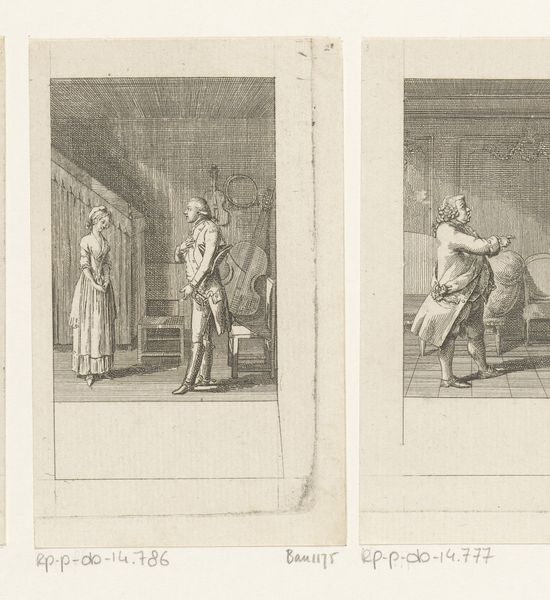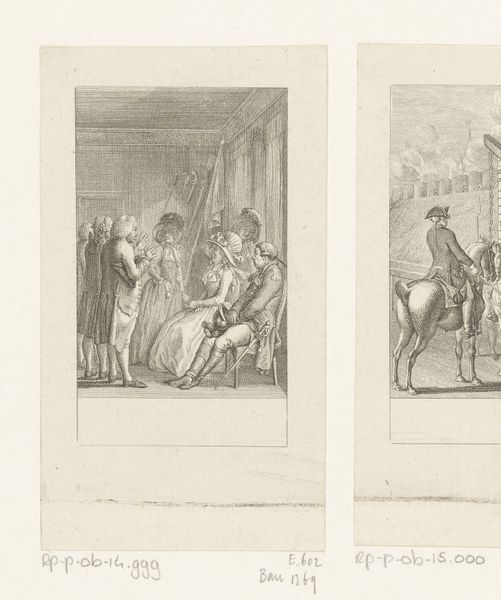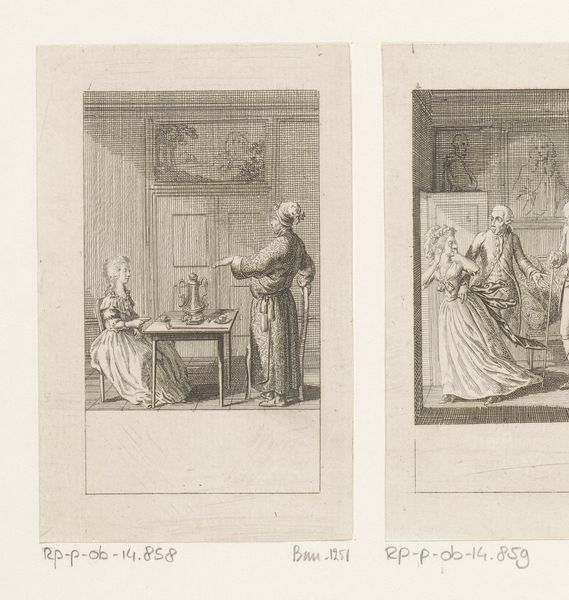
Dimensions: height mm, width mm
Copyright: Rijks Museum: Open Domain
Curator: This small print, “Huwelijksaanzoek van een arts,” or “A Doctor’s Proposal,” was created in 1780 by Daniel Nikolaus Chodowiecki. Editor: It’s funny; the way the composition is structured makes it look like a storyboard panel, and you’re immediately drawn to these elaborately dressed figures. What kind of paper and etching techniques were used to create it? Curator: The print is an etching on paper, characteristic of Chodowiecki's practice of exploring social narratives. Consider the setting: the intricate wallpaper, the suggestion of wealth. This is clearly about social mobility and the perceived value of marriage. What does it say about the construction of relationships as transactional within eighteenth-century society? Editor: Absolutely, it raises questions about value. Look at the labor involved—the etcher's careful lines, the paper production itself. Was this piece widely circulated, consumed as a form of social commentary accessible to different classes? How does its status as a print affect its perceived worth, compared to, say, an original painting of the period? Curator: Good question! Chodowiecki’s prints reached a broad audience, acting almost as proto-cartoons, engaging the public in dialogues about class, gender, and morality. How did societal expectations impact women’s choices and agency, and in what ways did they shape family structure during the Enlightenment era? Editor: Considering Chodowiecki’s other works, what sort of workshop practices were in place for creating these series, what kinds of artistic labor arrangements were required to circulate art that offered critique? That interplay, of using craft to criticize is especially potent. Curator: Precisely! Chodowiecki critiqued society by embracing popular print culture, aiming to spark a reform of behaviors in a manner accessible to everyone. It suggests he sought to use the print medium to bring about tangible shifts in societal values. Editor: Thinking about his audience now, how accessible might that societal critique actually have been and to whom? Did he rely on print runs, subscriptions or print selling structures to produce it and earn a living? How were these prints bought, displayed and discussed, and how was meaning created across this artistic material network? Curator: Exactly the kinds of conversations we need to be having when engaging with historical material! Editor: Thanks; that’s an analysis that allows us to grasp the artwork in its context.
Comments
No comments
Be the first to comment and join the conversation on the ultimate creative platform.

